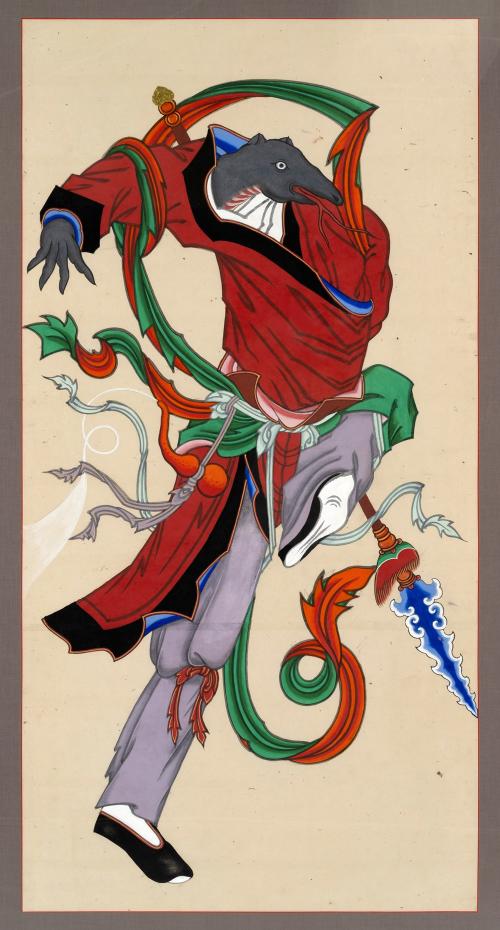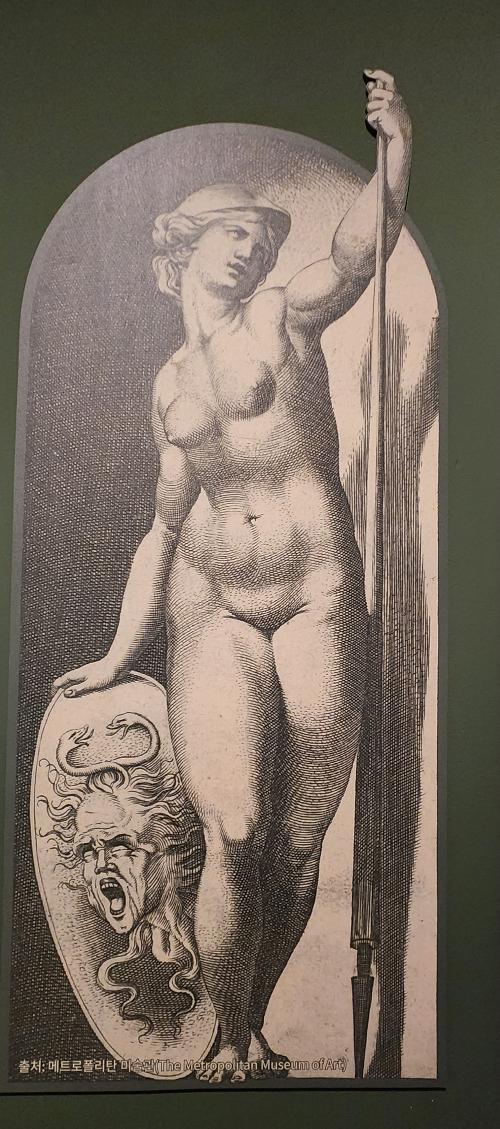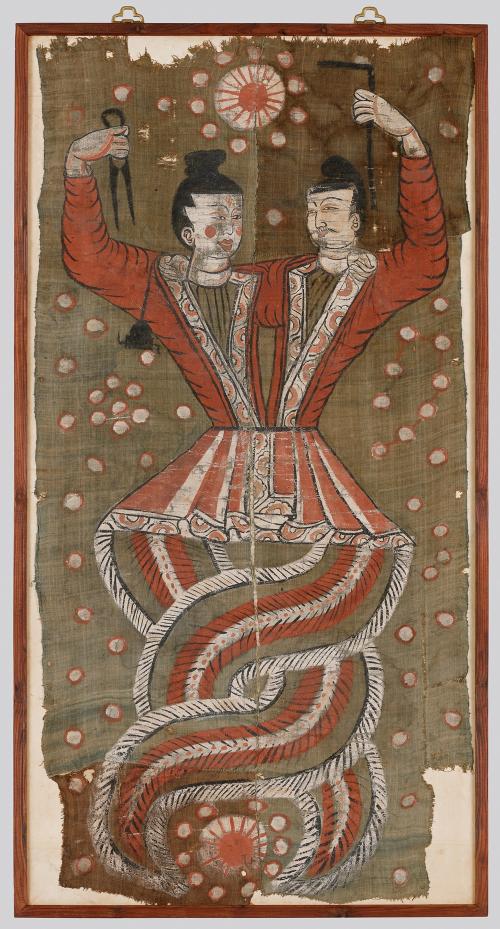By Lee Jihae
Video = Lee Jun Young
2025 is the Year of Snake under the East Asian zodiac, more specifically Eulsaneyon (Year of Blue Snake) since eul means "blue" and sa means "snake."
The snake is the sixth of the zodiac's 12 animals.
The National Museum of Korea in Seoul through March 3 runs the exhibition "The Snake with a Thousand Faces" featuring symbols of the slithery creature worldwide. Since 2002, the facility has held an exhibition every year featuring a given year's zodiac animal to promote domestic folklore related to the relevant animal. This year's exhibition sheds light on the snake's symbolic meanings worldwide.

"The Sixth Snake God Among the 12 Zodiac Animal Deities Protecting the Land" (National Folk Museum)
The 12-animal zodiac was introduced to Korea from China during the Unified Silla period (676-935), and spread through the custom of placing the signs in many places like the tombs of the ruling class. Representing direction and time, the concept gradually spread to the common people and likenesses of the animals began to appear in everyday items such as clocks and compasses.
The snake points to the south-southeast direction and indicates 9 a.m. to 11 a.m.
Because of its dual nature, the snake has relatively few regions in the nation named after it compared to its zodiac counterparts. While the country has 1,261 regions named after dragons, including Seoul's Yongsan-gu District, with Yongsan literally meaning "Dragon Hill," just 208 bear the snake's name.

This picture of the Greek mythical monster Medusa is drawn on a wall of the National Folk Museum of Korea. (Lee Jihae)
Symbols of destruction and death
In European mythology, snakes often symbolized world destroyers like the devil, chaos and darkness. For instance in Greek and Roman mythology, the monster Medusa has hair comprising snakes, and anyone who merely looks at her face turns into stone. The hero Hercules is also sent to kill the Hydra, an immortal monster snake with nine heads in a lake, to fulfill his 12 labors.
In medieval Europe, the imaginary creature basilisk appears in many legends as having the head of a lizard or chicken and the body of a snake. It represents death and often appears in literary works like the Harry Potter series and pop culture.

This poster with the Staff of Asclepius marks the 20th anniversary of the World Health Organization. (National Museum of Korean Contemporary History)
Emblem of life
Aesculapius is the Greek god of medicine who wields a staff with a snake wrapped around it. The serpent here represents immortality, regeneration and eternal life as it sheds skin and grows to live forever.
Given its global recognition as an icon symbolizing medicine, the staff is used as the logo of the World Health Organization.

Fuxi and Nuwa" (National Museum of Korea)
The exhibition also showcases the painting "Fuxi and Nuwa," two deities based on the Chinese myth of the creation of heaven and Earth. They each have the upper body of a human and the lower body of a snake, and hold a compass and a curved ruler that are said to symbolize the cosmological view of a round heaven and a square Earth.
Snakes also represented strong vitality and abundance, as they shed skin and lay about 10 eggs at a time. They were also depicted as water gods that brought rain for a bountiful harvest or the guardians of families or villages.
jihlee08@korea.kr
Most popular
- Grammy-winning producer calls Suga of BTS 'amazing artist'
- Animated 'KPop Demon Hunters' tops Netflix charts in 41 markets
- 'Squid Game' events to pump up K-Content Seoul Travel Week
- Reunited BLACKPINK releases video preview of world tour
- 'Universal love, family' themes fuel success of 'King of Kings': director
